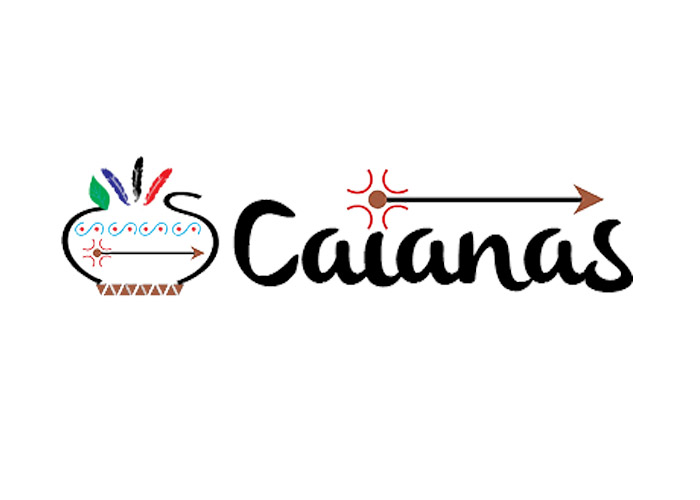Onçafari: tourism with jaguars contributes to nature preservation in Brazil
Jaguar plays a central role in the preservation of other wild animals; the low population of feline indicates the need to conserve more areas of nature


Inspired by safaris with wild animals in Africa, former racing driver Mario Haberfeld set up a jaguar sighting project in the Pantanal, located in the southwest-central region of Brazil. What was supposed to be just a tourism initiative became a broad strategy to preserve the largest feline in the Americas. This is how Onçafari works, an NGO that has been promoting ecological tourism and environmental conservation since 2011.
“Mario has always had a passion for wildlife. He travelled a lot to Africa and noticed potential in that model of tourism with animals, based on what we call habituation, which is getting animals used to the presence of vehicles. In this model, people do not interact with the animal, they just approach it in the car and, with the engine off, follow its life closely”, explains biologist and Conservation and Operations coordinator at Onçafari, Stephanie Simioni.
Over these 13 years, new actions have been incorporated into the project and today the main focus has been the creation of ecological corridors. With bases in 16 locations in the Amazon, Cerrado, Pantanal and Mata Atlântica, defending the jaguar has become a matter of honour.
“In addition to tourism, we do science, education, fire management, social projects and advocacy. We also have a rehabilitation and reintroduction front, where we receive animals that have gone through a critical situation, provide all necessary care and then return them to the wild. And the forest front, where we acquired preserved land to maintain the fauna”, continues the biologist.

The jaguar
According to Stephanie, jaguar preservation is strategic. It is considered the largest predator of Brazilian fauna and to live healthily, it needs access to a sufficient amount of prey. Its preservation, therefore, is directly linked to the preservation of other animals. “A habitat without jaguars indicates an ecological imbalance and that other species are also threatened. So when we protect the jaguar, we also protect the rest of the chain.”
The jaguar is not just sovereign in the food chain of biomes. In indigenous cosmologies, she is the guardian of fire, the entity that transforms animals into humans and that makes the connection between the world of the living and the spirits. Loaded with meanings by ancestral peoples, the jaguar also occupies a prominent place among environmentalists. In an article published in Nature, Brazilian researchers consider the jaguar an “iconic species”.
The researchers point out that the animal has a higher incidence in protected areas, indicating that its presence merges with the idea of a conserved nature. The areas that currently contain the highest densities of jaguars, however, are those that face the most anthropogenic threats, such as deforestation and the opening of new areas for agriculture and livestock, as well as increased urbanization.
“The jaguar is a symbol of conservation”, says Stephanie. “That’s why we decided to work with her. The jaguar attracts attention and arouses people’s curiosity. Ecologically speaking, it needs large areas to live. To protect a population of jaguars, it is necessary to protect huge natural areas”, highlights the biologist.


Ecological tourism
Even with so many action strategies, Onçafari’s tourism projects remain fundamental. In addition to contributing to environmental education, tourism is an important source of revenue for conservation actions, generating employment and income for the local population.
“Tourism moves the entire economic chain where we operate. So, if before the jaguar was seen as an enemy, for attacking livestock and everything else, today people understand that it is better alive than dead because it attracts people from all over the world to admire its live presence”, says Stephanie.
Through partnerships with the Caiman lodge, in the Pantanal, the Trijunção lodge, in the Cerrado, where maned wolf sightings are made, and the Legado das Águas, in the Mata Atlântica, Onçafari offers visitors the chance to observe the life of wild animals and learn about monitoring work using sophisticated technology.
The animals are monitored using camera traps (TRAP cameras) and GPS radio collars, which report their exact location every hour, every day. “Not all animals use collars, as it is a very expensive tool. But the technology is interesting because it helps us understand the size of these animals’ home range, identify their dens and even their eating habits”, says the biologist.


Survival threatened
Data from ICMBio indicate that there is currently a jaguar population of less than 300 individuals in Brazil in the Mata Atlântica, Cerrado and Caatinga biomes, less than a thousand in the Pantanal and around 10 thousand in the Amazon. This represents a 30% reduction in this population in the last 27 years. For Stephanie, these data are worrying.
“Researchers have shown that if nothing changes, within the next 30 years the jaguar could become extinct in biomes such as the Mata Atlântica.” Among the main factors that threaten the species are high human occupation, road kill, deforestation, use of fire and the free movement of domestic animals in preserved areas, such as cats and dogs, which tend to hunt their prey and spread diseases. As population centres decrease, the regenerative capacity of the species also decreases.
“In the past, jaguar populations were connected, there was a flow of movement of individuals, allowing the exchange of genes between them. Now, with all this fragmentation generated by human densification, jaguar populations are becoming isolated and reproducing among themselves. This affects the genetic variability of the population and the propensity for diseases to appear increases, making the species more vulnerable.”
Therefore, she says, it is important to create, maintain and expand protected natural areas that connect to form large ecological corridors. “Currently this has been the main strategy for conserving Brazilian biodiversity”, she concludes.


Want to support this cause?
Onçafari forms partnerships in public and private areas, universities and companies. Donations are an important source of income. To donate, click here. To find out more, visit the website or follow social media on Facebook, Instagram and LinkedIn.





